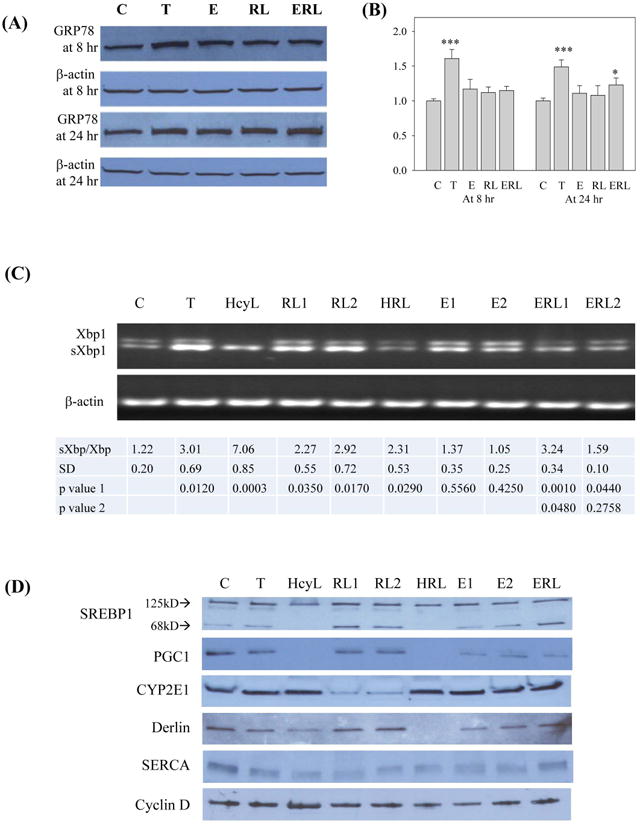Figure 5.

Effects of HIV protease inhibitors and alcohol on ER stress response in primary human hepatocytes. (A) GRP78 expression in response to the HIV drug and/or alcohol; C, control; T, tunicamycin (3 μg/ml) used as ER stress positive control; E, alcohol; RL, ritonavir and lopinavir; ERL, alcohol plus RL. (B) Quantitation of GRP78 expression after normalized with β-actin; *p<0.05 and ***p<0.005 compared to control. (C) RT-PCR of mRNA showing shifting from Xbp1 to spliced Xbp1 (sXbp1) upon ER stress; HcyL, homocystein thiolactone (1 mM); RL, ritonavir and lopinavir at 15 μg/ml (RL1) and 15 μg/ml (RL2); HRL, homocystein thiolactone (1mM) plus RL at 5 μg/ml; ERL1 and ERL2, RIT and LOP (10 μg/ml) plus alcohol at 85 mM and 35 mM respectively. Quantitation of ratio of sXbp1 to Xbp1 is shown under the gels. Comparisons were made between control and treatments (p value 1) or between RL1 and ERL1 or ERL2 (p value 2). (D) Immunoblots of ER stress markers; PGC1, PPARγ coactivator1; SERCA, the Sarco/ER Calcium-ATPase; Detection of cyclin D indicated that the cells were viable in the presence of HcyL.
